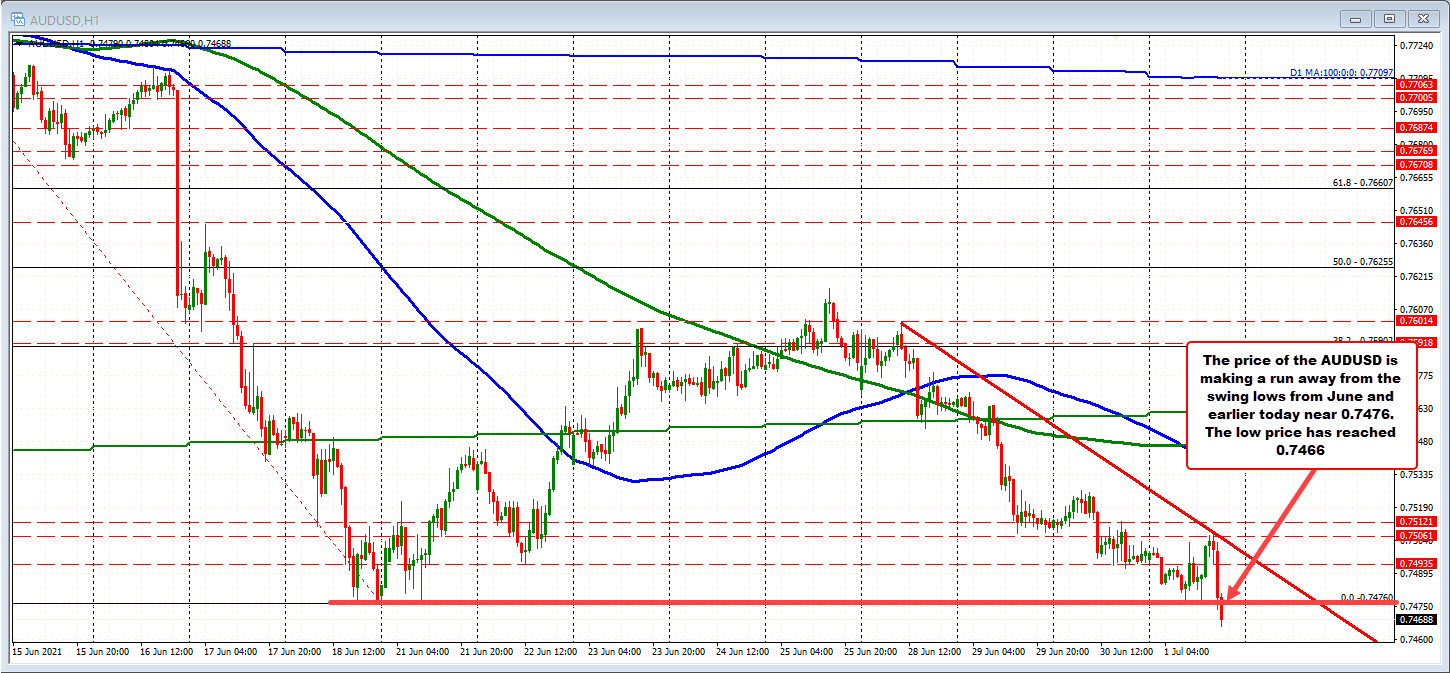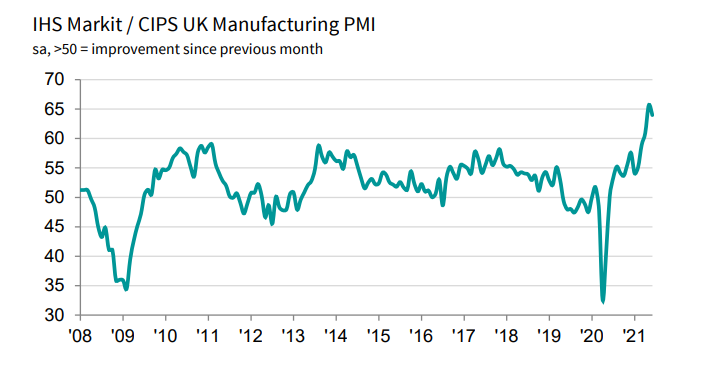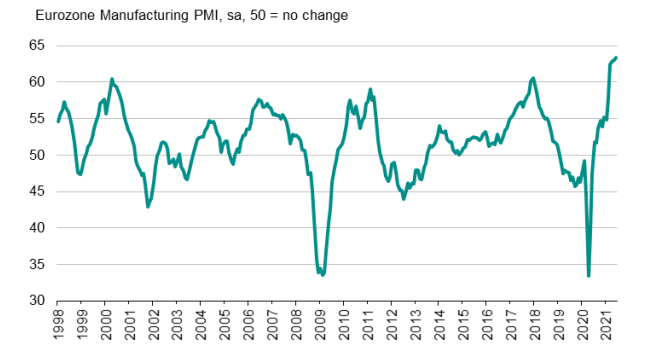AUDUSD traded lowest level since December 2020





“UK manufacturing maintained a near survey-record pace of expansion at the end of the second quarter, as the reopening of economies at home and overseas supported increased production, new orders and employment. Solid business confidence and rising backlogs of work also suggest that the current upturn has further to run.
“The sector is still beset by rising cost inflationary pressures, however, as Brexit-related trade issues exacerbated global supply chain delays. The resulting widespread raw material shortages drove purchase prices up to the greatest extent on record, leading to an unprecedented steep rise in selling prices. There are also widespread reports of supply issues causing disruptions to production schedules and impeding the re-building of buffer stocks.
“The continued inflationary impact of capacity issues at both manufacturers and their suppliers will be a further factor keeping headline inflation above the Bank of England’s 2% target in coming months.”

A slight revision higher with the headline being yet another fresh record for a fourth consecutive month now as manufacturing conditions in the region keep more solid as virus restrictions are loosened, with output coming in strong.
“Eurozone manufacturing continued to grow at a rate unbeaten in almost 24 years of survey history in June as demand surged with the further relaxation of COVID-19 containment measures and vaccination progress drove renewed optimism about the future.
“However, the sheer speed of the recent upsurge in demand has led to a sellers’ market as capacity and transportation constraints limit the availability of inputs to factories, which have in turn driven industrial prices higher at a rate not previously witnessed by the survey. Manufacturers are clearly willing to pay more to ensure sufficient supplies of key inputs.
“Encouragingly, there are several survey indicators which add to hopes that the current spike in prices will prove transitory.
“Widespread issues such as port congestion and a lack of shipping containers should soon fade as the initial rebound from the pandemic passes. Similarly, recent months have seen safety stock building as companies seek to protect themselves against potential future supply-chain disruptions, which has exacerbated the imbalance of demand and supply in the short-term. Once sufficient stocks are built, this effect should likewise fade.
“Finally, we have also seen the expansion of capacity via record employment growth and greater capital expenditure on business equipment and machinery. This expansion should raise output in sectors that are currently straining to meet demand, and hence remove some of the upward pressure on prices for these goods.”

